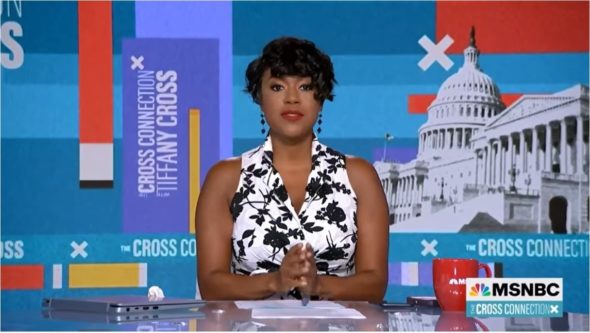#Tips on Living With—And Escaping—Student Debt

Table of Contents
Tips on Living With—And Escaping—Student Debt
For members of the past five generations, student debt has been one of the most difficult financial issues to manage. If you graduated recently with an undergraduate degree, chances are you owe in the neighborhood of $37,693 in student loan debt. That’s the national average right now. If you attended medical school, you’re likely to owe about $215,000. Newly minted attorneys graduate with about $165,000 in debt and MBA grads aren’t too far behind. Those who graduate from a top business school typically owe upwards of $100,000 in loans. Student loan debt is often an inescapable reality for those who seek to improve their lives through education. And the problem is likely to worsen if education costs continue to skyrocket as they have for decades.
Is paying off your student loans challenging—or even strangling you? Need help figuring out how to get ahead of debt in general? Check out our most effective tips for managing your everyday finances and, in turn, reducing the burden of your education debt.
What’s Coming In and What’s Going Out?
The only way to control your financial life is to have a clear, present-tense picture of it. Forget the regrets of the past and take stock of your situation today. Get your pay stubs in front of you. Open up your checking, savings, and investment apps so you can reference your most recent statements. If you have a 401K or IRA, add your latest statements to the pile of papers in front of you. That’s the fun part, where you get to count up your accomplishments. The next part isn’t so fun. But it’s essential.
Your next job is to take stock of your fixed expenses, including student loan payments, your monthly rent or mortgage obligations, insurance payments, and utilities, including your cell phone service. We’ll call these your fixed expenses—the ones that allow you to live a pretty basic life. Then—and this is the part that may surprise you—make a list of what we’ll call your discretionary expenses: the ones you have more choice about. Here’s where you total up such expenditures as going out to eat with your buddies or buying lunch from your favorite food cart. Include your Uber rides, the money you spend on non-essential clothing items, gifts you buy, your music and video streaming services, movie and concert tickets, and—if you’re being honest with yourself, your fuel costs. If you’re in the habit of buying a morning coffee instead of filling up a mug at home, list those expenses, too.
Your credit card payments fall in the nether region between fixed and discretionary spending. On the one hand, you have to pay them. On the other hand, you can choose not to rely on credit cards. As you total up your expenses, be sure to note how much are you paying in interest on your outstanding? That’s money you don’t have to spend and for many people, it represents a significant portion of their monthly expenses. Now add up what you spend and include an extra 10% for the things you don’t remember to list or don’t have a clear record of, like small cash expenditures.
Now compare your income dollars to your expense dollars. Is there anything left over? Good for you! You’re in a much better position than many of your peers. We’ll talk about smart ways to use your extra cash to reduce your expenses in a minute. But if you find yourself in the red, it’s time to look at limiting your discretionary spending. Can you take public transportation a couple of times a week? Make your lunch at home instead of buying it? Do you really need Spotify, Pandora, and Apple music? Or HBO Max, Netflix, and Amazon Prime? Streaming services can be a significant drain on your budget and many people don’t even realize how many they have. You may find you rarely or never use some of the recurring-payment services you’ve signed up for. If you’re living paycheck-to-paycheck, you need to do whatever you can to cut your expenses and start saving money. That’s the key to getting out of debt.
The Smartest Thing You Can Do to Get Ahead of Debt
Here’s the deal—and it may sound crazy—but the easiest way to get out of debt is to get out of debt. Many of us are forced, at one time or another, to rely on credit cards to get by. Some of us use credit cards habitually, in part because we don’t have a clear idea of what’s in our checking accounts and don’t want to risk overdrawing them. That’s why you should always know—and be able to predict—your bank balance at any given point in the month. Credit card balances build up before we know it. And the money we spend to service that debt is considerable. In April 2022, the average credit card interest rate was over 16%. Most Americans have between $2,177 and $6,694 in credit card debt. If you carry just a smaller-than-average $1000 credit card balance and only make the minimum payment due each month, it will take you about 3 years to pay off your debt. More importantly, you’ll spend nearly $270 on interest charges along the way. In many cases, that’s enough to cover an extra month’s student loan payment. Making extra payments on your student loans reduces your loan principal; which means you will spend less on interest over the life of your loans. That’s true whether you make those payments against federal or private loans.
Consider Refinancing Your Student Debt
Have you taken out both federal and private student loans? You may be eligible to refinance the private portion of your student debt at a lower interest rate today. That’s especially true if you have a higher credit score now than when you took out your loans originally. But it may also be the case if you took out your loans some time ago when interest rates were generally higher. It’s worth a shot to investigate the best student loan refinancing deals available to you right now.
Be a Smart Taxpayer
If you’re carrying student debt, Uncle Sam can give you a hand. In 2022, the federal government will allow you to deduct up to $2500 from your gross income for student loan interest payments. This tax credit has been available for some years and many people aren’t even aware of the benefit. Lowering your gross income will save you federal tax dollars and may even push you into a lower tax bracket. If you’re in a lower tax bracket, you’ll pay a lower overall tax rate. That can save you thousands of dollars off your next tax bill—money you can use to pay off any debt you’re carrying. Start with your highest-interest loans first to maximize your savings.
Your Employer Can Help You Get Out of Debt
The job market is especially competitive now. Employers are coming up with all kinds of creative ways to attract new employees and keep their highest-performing ones. Some are offering the incentive of student loan assistance. Under current tax laws, employers can contribute up to $5,250 to pay off employees’ student loan debt. That money doesn’t count as income for employees and employers earn their own tax advantages when they help underwrite the cost of student loans. Only a small percentage of employers offer this type of assistance to employees, but their numbers are growing. So it’s certainly worth asking your company’s benefits manager whether you may be eligible for assistance. It’s also something you can use as a negotiating tool if you’re considering a new job offer.
Are You Eligible for Federal Loan Forgiveness?
If you’ve worked for a government entity for 10 or more years during your loan repayment —whether at the federal, state, local, or tribal level—you may be eligible for forgiveness of your federal loan balance under a program called Public Service Loan Forgiveness (PSLF). You may also be eligible if you have worked for ten years in the non-profit sector. Ten years is a long time to spend paying off your loans, but depending on the size of the loan you took out, your loan term may be as long as 30 years. By applying for PSLF, you can potentially save yourself 20 years of federal student loan payments. The process of applying for PSLF is painstaking. So if you’re working in the government or a non-profit sector, you may want to begin investigating PSLF in advance of your potential eligibility date. You can never be too prepared when it comes to applying for loan forgiveness.
Design a Debt Elimination Plan That Works for You
Depending on your financial circumstances, one or all of the debt-decreasing strategies may work for you. A multi-tactical approach is the best approach. But becoming financially introspective and understanding where your money is going each month is the first step in attacking any financial challenge. So take an honest look in the mirror. Your debt-reduction plan will reveal itself to you once you’ve done some serious introspection.
By Susan Doktor
Author Bio:
Susan Doktor is a journalist and business strategist. She writes on a wide variety of personal finance topics, including debt management and financial technology. Her contribution comes to us courtesy of Money.com.
If you liked the article, do not forget to share it with your friends. Follow us on Google News too, click on the star and choose us from your favorites.
For forums sites go to Forum.BuradaBiliyorum.Com
If you want to read more News articles, you can visit our General category.



